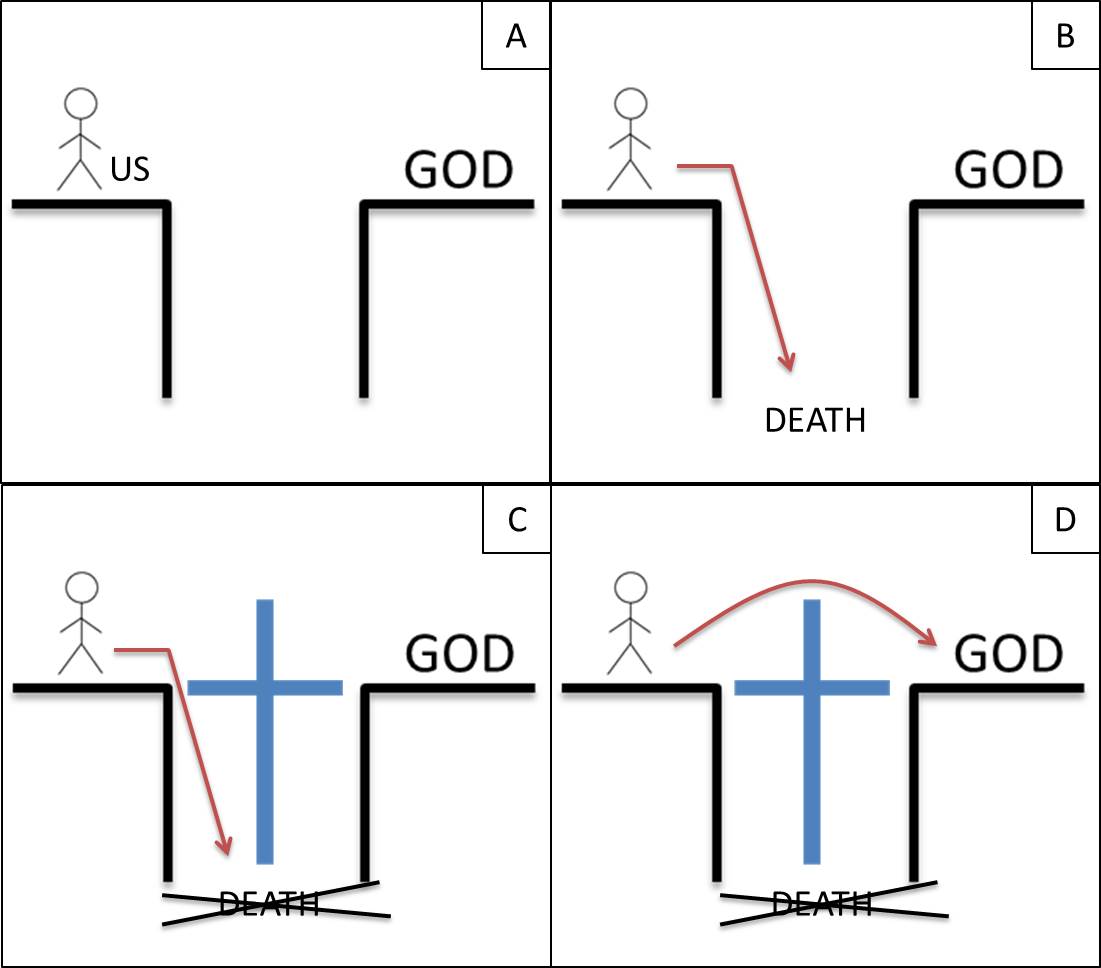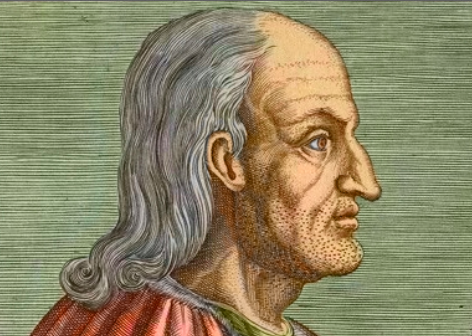Scripture: Romans 5:1-11
At my first church as a part of my job I was supposed to supervise their youth pastor and his work. One evening I was at their youth gathering. That night’s topic was “how Jesus saves us?” The youth pastor asked two students to come out to participate in a small skit. One of them was assigned to be father and the other son. The son got into a problem and made a big mistake. And he deserved a punishment. The son got on the position to be spanked with a big stick by the father. At the moment when the father tried to hit his son with a scary looking stick the youth pastor pushed out the son and he took his position. Then, he yelled at the student who was supposed to be the father, “You hit me instead of him. I am taking his place.” The student pretended to hit him, but the youth pastor  yelled loudly, “Hit me harder! Harder!” The student was almost crying, and I was horrified. After that the youth pastor drew a diagram on the blackboard on the wall. He explained to them that we, the children of God, made mistakes and sinned and deserved a big punishment by the father. But his son, Jesus, took our place on the cross and died for our sins. Through his suffering and death we are saved. Doesn’t it sound so familiar? We say it in our prayers, sermons, and Bible studies. We believe that’s how we are saved from hell and go to heaven. There’s nothing “wrong” with this tradition, but my question is, “Does God really demand a violent punishment to save us?” The other important question is, “Did God have to be manipulated, or bribed with Jesus’s sacrifice on the cross as an offering to change his mind from punishment to salvation?”
yelled loudly, “Hit me harder! Harder!” The student was almost crying, and I was horrified. After that the youth pastor drew a diagram on the blackboard on the wall. He explained to them that we, the children of God, made mistakes and sinned and deserved a big punishment by the father. But his son, Jesus, took our place on the cross and died for our sins. Through his suffering and death we are saved. Doesn’t it sound so familiar? We say it in our prayers, sermons, and Bible studies. We believe that’s how we are saved from hell and go to heaven. There’s nothing “wrong” with this tradition, but my question is, “Does God really demand a violent punishment to save us?” The other important question is, “Did God have to be manipulated, or bribed with Jesus’s sacrifice on the cross as an offering to change his mind from punishment to salvation?”
 We call God’s works of salvation, “atonement” and it means becoming at one or making reconciliation with God. The dominant atonement theory in Christian churches where you and I grow up is “Penal substitution” or “Satisfaction” theory which is “Jesus died on the cross for our sins. He paid a debt or satisfied a debt caused by our sins offending God’s righteousness or God’s honor.” This understanding is originated from St. Augustine and St. Anselm. And later one of reformed theologians, Calvin, developed it further saying, “on that cross as Jesus died the wrath of God was satisfied.” Even outside of Calvinistic churches Christians sing and pray the theology of God’s wrath.
We call God’s works of salvation, “atonement” and it means becoming at one or making reconciliation with God. The dominant atonement theory in Christian churches where you and I grow up is “Penal substitution” or “Satisfaction” theory which is “Jesus died on the cross for our sins. He paid a debt or satisfied a debt caused by our sins offending God’s righteousness or God’s honor.” This understanding is originated from St. Augustine and St. Anselm. And later one of reformed theologians, Calvin, developed it further saying, “on that cross as Jesus died the wrath of God was satisfied.” Even outside of Calvinistic churches Christians sing and pray the theology of God’s wrath.
Many people say that Anselm is the most important Christian theologian in the West between Augustine and Thomas Aquinas. Though he was a brilliant scholar and an archbishop, in his heart he was a spiritual seeker: seeking for the understanding of God’s existence and God’s works of salvation. Whenever I ask my son, Tim, to pray with me he always says, “how do I know that God exists and even if God exist how do I know him?” It is an unavoidable Christian struggle for all of us and Anselm never gave up on the search for answers on those questions.
Now I want you to take a little moment and think about your own understanding of God’s works of salvation. If you need to explain “how Jesus saves us” to your children or friends what would you say to them? How would you explain it? What kind of diagram would you draw for them? With what kind of teachings of atonement did you grow up? Do know that your understanding of God’s salvation affect you not only your faith but also your worldview, your characters and your parenting style?
An evangelical Christian pastor taught his congregation that there is no hell and God’s love, not God’s wrath, wins. “Love wins” is the title of his book. He was kicked out from the church that he started because of that teaching. I believe the people of that church are not bad people kicking out their pastor just because. I believe they grew up with the theology of God’s wrath and hell as the consequences of human sins. That belief formed their world view and the way they practice their faith in church and family. Our Christian beliefs, especially our belief on how God saves through Jesus, form the way how we engage with the spouse and children at home and the way we interact with people in church and in the world. That’s why knowing and understanding our own atonement theory is so important.
In two thousand years of Christian history there are many other understandings, teachings, or theology on atonement, on how God’s works of salvation work in addition to Satisfaction atonement theory. There is Incarnational Atonement theory. It is the dominant theology of salvation in Eastern Orthodox Church that God’s incarnation, becoming human flesh, saves us because God reconciles with us at his birth. Jesus came to the earth not to die on the cross but to be with us. For them salvation doesn’t mean going to heaven but uniting with God. That’s why in the Orthodox Church the Advent and Christmas, not Lent, is six-week-long season to prepare themselves for new life in God. This was one of the prominent teachings of the church until the church divided between West and East in 1054. In the church of West, the teachings of Augustine, Anselm and Aquinas became the main theology and all Protestant churches are from the church of West. That’s why we didn’t learn much about Incarnational Atonement theory of Eastern Church. For us most Christmas hymns and carols we sing are about little baby Jesus, how gentle and lovely rather than God is here in this vulnerable human flesh and God makes himself known to us, now we know God and we are saved!
There are other atonement theories focusing on Jesus life and teachings on the earth rather than his cross and death. Jesus is our moral example showing us how to live and die. His love and care for the poor, the sick and the marginalized let him to his death not as a sacrifice but as the result of his life and teachings of love. Or Jesus is our healer and by his healing power we are saved from sin and brokenness. Also, there is “Christ, the victor” or “Ransom” theory of atonement emphasizing Jesus’ resurrection as that’s when the Devil was tricked and he didn’t have any control over Christ at all. According to this theory Jesus’ death paid a ransom to Satan, allowing God to rescue people who were under Satan’s bondage.
When I need to explain how God’s works of salvation work I like to use this diagram. No one atonement theory satisfies me to understand God’s works of salvation but when I see them together from God’s incarnation to resurrection, including the works of the Holy Spirit, my heart is filled with joy and gratitude knowing and believing that we are saved not only for heaven after we die but here in this life. We are saved by God’s works of incarnation, teaching, death on the cross, and resurrection. On top of that God, the Holy Spirit, sustains our salvation through his guidance and his constant prayers on behalf us. At our baptism we are saved by God the Father, the Creator, the Son, the Redeemer, and the Holy Spirit, the Sustainer.
Though St. Anselm was a profound philosopher he was not just a heady scholar and theologian. As I said earlier he was a spiritual seeker seeking for the wisdom and knowledge of God and he was way beyond the boxes and categories of theology in his time. His prayer you have in the insert shows his eventual understanding of God. Please take out the insert and let us pray together.
